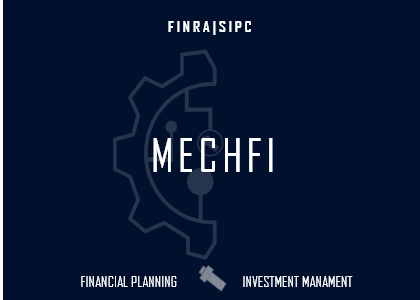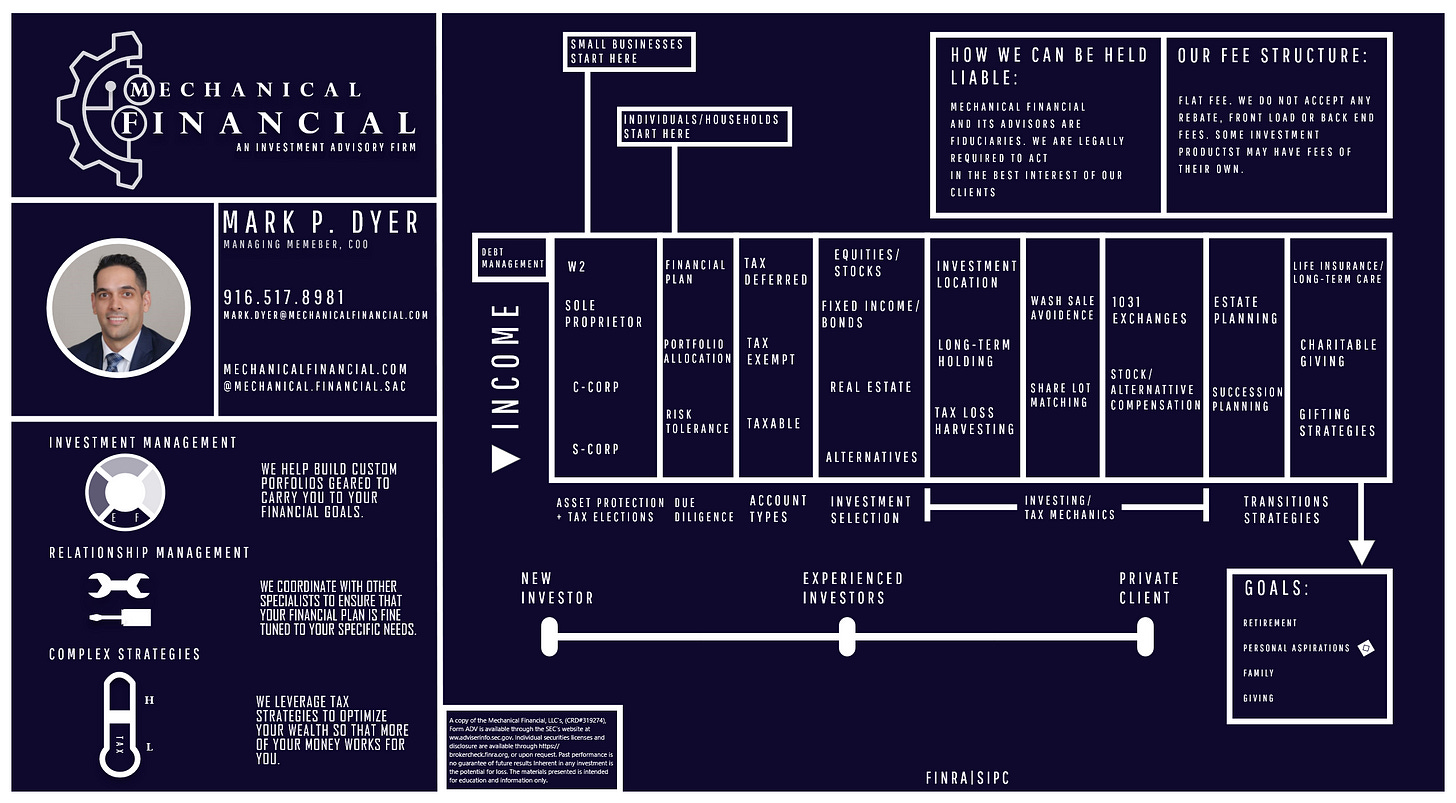
Long-term prudent investing is the best advice anyone could give and receive when talking about the capital markets, or any form of investment strategy for that matter.
However, the day-to-day discussion with clients and potential clients typically entails a very different description of what they think wealth is. Some certainly understand what wealth building is, and some even could give me a class or two on different ways of doing it.
To me, that is just it, there are only different ways of doing it. And the specific way is usually up to the individual. However, of all the conversations, I have had with clients and prospective clients I have stumbled upon initial questions I believe eliminate a series of potential errors of misunderstanding clients and potential clients. Moreover, it helps to pick an approach to make certain decisions that are counterintuitive to building wealth and avoid common errors.
It really comes down to one question:
Are you seeking to optimize your finances, or are simply targeting a lifestyle now and in the future?

Small business owners often pick optimization, while everyone else tends to select the latter (W-2 workers).
(Some information may appear like tax advice, it’s not. I’m not an accountant, but my experience has allowed me to acquire certain knowledge of the tax system. Plus, taxation is incidental to investing and wealth creation).
The Trade-Off and Optimization
When it comes to qualifying for a loan it is always about the person’s ability to pay back a loan the amount of cash you have at the moment, how much of it is legal, taxed, and how steady your ‘realized’ cash flow is. I use ‘realized’ because most individuals take too much cash without paying taxes on it, or they pay too much in distributions and do not realize enough profit for the company to qualify for loans and lines of credit.
(I rather call it the way it is).
The closer the realized income is to zero, no matter how many others ways of accounting you use - (i.e. receipts, invoices) - public markets weigh the value of unrealized cash flows a lot lower, and in some cases not at all when considering qualifying you for a loan. Think of it like this, each dollar you do earn is only worth .40 cents (this is not a real number, this is just for illustration purposes) which turns out to be another tax for something you may need to pay for something else. Banks prioritize your cashflows before lending money.
The alternative, unfortunately, is borrowing money in the private markets - hard money loans, private mortgages, etcetera. Usually, this is a pool of investors who build their own qualifying process as a median - instead of a bank, debts abiding by fed mandates - (which is why it’s considered public) - before lending it out. The issue in this market, however, rates and terms/covenants are more expensive. Which, in absolute terms, turns out, in many cases, to be just as costly as if you paid interest and taxes in the public market.
I believe it’s my role as your advisor to help you understand the importance of and how to build a process to bring the “realized” and “unrealized” figures into balance. By doing this, especially business owners, an entity/person can optimize their capacity at any given moment. This is powerful. This optionality positions small business owners to make large investments (i.e. acquisition, equipment, land, talent) at any given time, it allows them to have cash and the ability to borrow in short notice.
Now, I’ve noticed some behavioral biases small business owners, especially older business owners, have around taxes. Where the bias is so profound that I’ve seen people not pay $100 in taxes despite the fact, through proper structuring, would lead them to earn $1,000 more in income.
(Blown head gasket tragedy).
Wealth Targeting
This method was an interesting concept to learn because the materials have been laid out in front of me the whole time and never stuck until I worked with a lawyer who liked biking.
The conversation went well beyond what I felt a traditional financial goals conversation would normally go. Normally, it consisted of risk tolerance and how much they felt they needed a year to feel comfortable in retirement.
The due diligence was more investigative because whatever happened in the conversation, made me realize how to have a true financial goals conversation.
Because he wanted to compete in marathon-type events and had every intention to win when he retired, and after interviews, research (even reading white papers), reading books, and speaking to contractors (because he needed to retrofit equipment in his house), we finally decided on a number he needed to retire.
He had a number, and loose version of a story arc to follow (which is why Mechfi takes storytelling, seriously). After his plan was in place, we then optimize his financial engine - how he takes income (See Mechfi’s Blueprint) - and geared it towards accomplishing his specific goal.
Going through this activity seamlessly over the course of the year, and how vividly he imagined his future self because of the level of conversation I was able to have with him, was an invaluable insightful experience for me. He to this day never knew he did this for me, and I truly do believe is walking away with a plan that will help him succeed. (I’ve started Mechfi, since then).
Optimizing Wealth Vs. Targeting Wealth - Both Paths Are Valid
It doesn’t have to be one or the other, small business owners have a blessing and curse, and it’s not really this path versus the other. Small business owners can accomplish building an efficient wealth creation engine and tailor their retirement to how my client once did for his retirement.
W-2 workers (without side hustles) typically have the trade-off a small business owner faces worked out for them. Your capacity is built on top of what your paycheck can offer.
Small Business owners are just required to manage more of the wealth creation engine due to the very nature of being a small business owner. Primarily, because they own their own entities (the powers around that concept will be in another article), have their own balance sheets, income statements, and in some cases share holders, to manage. The employer does that for W-2 workers.
